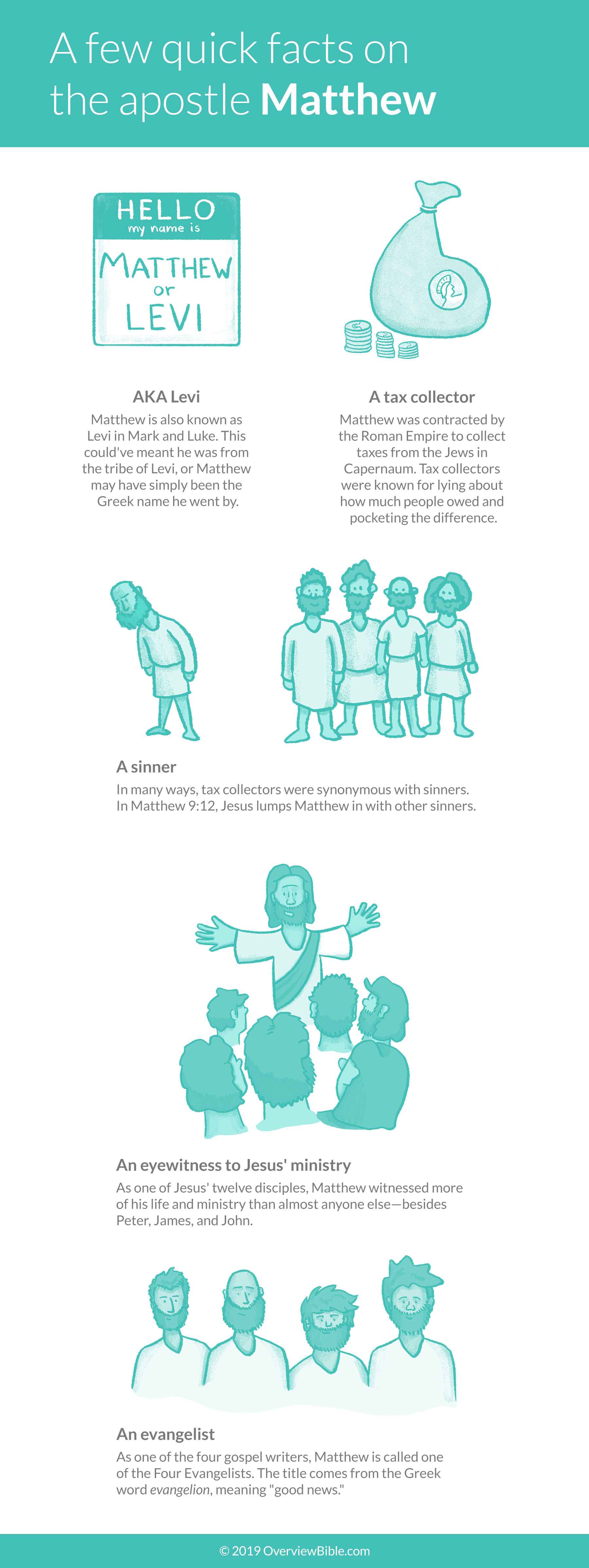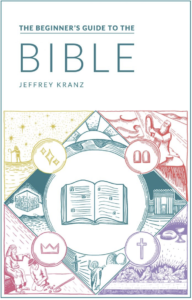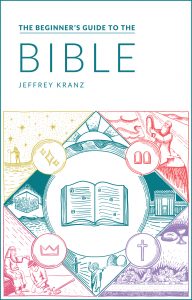The Apostle Matthew, also known as Saint Matthew and Levi, was one of the twelve disciples of Jesus Christ. He is traditionally regarded as the author of the Gospel of Matthew. When Jesus called Matthew to follow him, he was a tax collector (or “publican”)—one of the most reviled professions in ancient Judaism.
Little is known about this apostle. Aside from a handful of mentions in the gospels, he’s a surprisingly obscure New Testament figure. And despite the fact that the church has long considered him the author of the Gospel of Matthew, little else was ever recorded about him.
While Matthew is honored as a martyr, no one knows for sure where or how he died. Various accounts say he was beheaded, stoned, burned, or stabbed—one even suggests he died of natural causes like John.
There are legends about his ministry, but no substantial records of his role in the early church. Later apocryphal texts emerged claiming to be written by him, and some early church fathers supported these texts, but the works only survive in fragments and quotations, and modern scholarship is divided on their authorship.
So what do we really know about him? We’re going to look at what the Bible says about Matthew, what we know about the gospel that bears his name, and some other tidbits about this enigmatic apostle.
First, here are the quick facts.

Who was Matthew in the Bible?
Virtually everything we really know about Matthew comes directly from the gospels. He’s mentioned in all three Synoptic Gospels (Matthew, Mark, and Luke), and listed among the disciples in Acts. But that’s it. Including parallel passages, there are just seven mentions of him in the entire Bible. Only one (and its parallels) gives us any substantial details about him.
Also known as Levi
Matthew, Mark, and Luke have parallel accounts of Jesus calling a tax collector to become a disciple. Interestingly, Matthew calls this person Matthew, and Mark and Luke call him Levi:
“As Jesus went on from there, he saw a man named Matthew sitting at the tax collector’s booth. ‘Follow me,’ he told him, and Matthew got up and followed him.” —Matthew 9:9
“As he walked along, he saw Levi son of Alphaeus sitting at the tax collector’s booth. ‘Follow me,’ Jesus told him, and Levi got up and followed him.” —Mark 2:14
“After this, Jesus went out and saw a tax collector by the name of Levi sitting at his tax booth. “Follow me,” Jesus said to him, and Levi got up, left everything and followed him.” —Luke 5:27–28
These accounts so closely parallel each other that it’s hard to imagine they aren’t speaking of the same person.
There are several possible explanations for this difference. Some argue that Levi was this person’s tribal name—meaning he belonged to the tribe of Levi—and that Matthew was a more personal name. Others suggest this person was originally named Levi, but that Jesus called him Matthew (similar to Simon, who Jesus named Peter). And it’s also possible that it’s simply a matter of him having a Greek name (Matthew) and a Hebrew name (Levi), like how the Apostle Paul was also known by Saul.
Since this person was a Jew who worked for the Romans, it wouldn’t be surprising to learn that he was known by both names.
A tax collector (or publican)
As we just learned in the passages above (Matthew 9:9, Mark 2:14, Luke 5:27–28), Matthew was a tax collector, or a publican—someone who was contracted by the Roman government to collect taxes. As a Jew, stepping into this profession was essentially an act of betrayal to his people.
Tax collectors had very little accountability. They’d be told to collect a specified amount of money, but they could tell people they owed a different amount, and they had no power to dispute it. Tax collectors earned a reputation for telling people they owed more than they did and pocketing the difference. To the Jews, tax collectors were the embodiment of sin.
When tax collectors came to be baptized by John the Baptist, they said, “Teacher, what shall we do?” and he told them: “Collect no more than you are authorized to do” (Luke 3:12–13).
Interestingly, Mark and Luke don’t explicitly label the disciple Matthew as a tax collector—we have to infer that Levi the tax collector (Mark 3:18 and Luke 6:15) is the disciple named Matthew. The Gospel of Matthew leaves little room for confusion though: he’s called “the tax collector” in the list of disciples:
“These are the names of the twelve apostles: first, Simon (who is called Peter) and his brother Andrew; James son of Zebedee, and his brother John; Philip and Bartholomew; Thomas and Matthew the tax collector; James son of Alphaeus, and Thaddaeus; Simon the Zealot and Judas Iscariot, who betrayed him.” —Matthew 10:2–4
Fun fact: As a tax collector, Matthew would’ve presumably been great with money, and modern readers would think he’d be an ideal candidate for the group’s “official treasurer.” But given the reputation of tax collectors in first-century Judaism, that would’ve been a bad move politically—which might be why the disciples gave the job to a guy named Judas Iscariot. Think about that: they were worried about putting a tax collector in charge of their money, but Judas not only stole from the money bag (John 12:6), but ultimately betrayed Jesus.
A “sinner”
The Bible says we’re all sinners (Romans 3:23), but in ancient Judaism, the label was reserved for the worst of the worst—like tax collectors.
Tax collectors were sinners by trade, lying and cheating their way into riches and robbing from even the poorest among their people. They were religious outsiders, because the way they practiced their profession openly defied the Law of Moses. The richer they were, the worse they were assumed to be.
After Jesus calls him, Matthew hosts a gathering at his house, and as he and his unsavory companions dine with Jesus, the Pharisees ask why Jesus eats with tax collectors and sinners (Matthew 9:11).
Then Jesus lumps Matthew in with “the sinners”:
“On hearing this, Jesus said, ‘It is not the healthy who need a doctor, but the sick. But go and learn what this means: “I desire mercy, not sacrifice.” For I have not come to call the righteous, but sinners.’” —Matthew 9:12
By calling Matthew, Jesus was proclaiming that no one would be excluded from his movement—not even those society considered irredeemable.
An eyewitness to Jesus’ ministry
As one of the twelve apostles, Matthew was there throughout almost all of Jesus’ ministry. The only people who saw more of who Jesus was and what he was capable of were Peter, James, and John.
Some argue that Matthew’s role as an eyewitness is evidence that he didn’t write the Gospel of Matthew. Matthew’s gospel appears to rely heavily on Mark’s (which is why there are so many parallel passages), but the Gospel of Mark is believed to have been written by a man named John Mark, who was not an eyewitness. So why would an eyewitness use an account written by someone who wasn’t there? There are a few counter arguments, but the main one is that the early church claimed John Mark wrote down Peter’s account of Jesus’ ministry . . . and Peter saw more of Jesus than Matthew and was a pillar of the early church, so . . . *shrug*.
Besides this, Matthew gives Peter a good deal of positive attention in his gospel. It’s possible that out of respect, friendship, or deference, Matthew used Peter’s account for consistency’s sake.
An evangelist
Matthew is considered one of the “Four Evangelists.” This is a title reserved for Matthew, Mark, Luke, and John—the traditional authors of the four gospels. It comes from the Greek word evangelion, meaning “good news.” These four writers proclaimed the good news of Jesus Christ with their writings.
A scribe?
As a tax collector, Matthew’s job would’ve involved meticulously recording and documenting tax information. Some argue that Jesus referred to him in Matthew 13:52, because his job would’ve technically made him fit the description of “scribe.”
“The ‘scribe’ of Matthew 13:52 is, no doubt, Matthew himself, who as a tax collector had been a secular scribe. Jesus likens him to a person ‘bringing forth treasures new and old’—the old being those acquired as a tax collector (such as gifts for accuracy and organization), the new being Jesus’ teachings; about the kingdom of heaven.’ As a man doubly equipped, Matthew is now ready for further scribal activity—the writing of the book that bears his name.” —Walter A. Elwell and B.J. Beitzel, Baker Encyclopedia of the Bible
However, some translations render “scribe” in Matthew 13:52 as “teachers of the law,” and in context, Jesus certainly seems to be talking about those with a religious background—he speaks of angels separating the wicked from the righteous (Matthew 13:49)—and it seems more likely that bringing out “new treasures as well as hold” would refer to their knowledge of the Law and the prophets in light of the gospel.
That said, yes, Matthew could technically be called a scribe—but probably not as it’s often used in the Bible.
When and where did Matthew live?
In order to be a disciple of Jesus Christ, Matthew obviously would’ve had to live at the same time. Most scholars believe Jesus lived from sometime around 4 BC to around 30 or 33 AD. Since we don’t know how old he was at the time he met Jesus, we can’t be certain he was born in the first century, but he certainly lived then. The date of his death is unknown.
Jesus encountered Matthew at a tax booth in Capernaum—a city on the shore of the Sea of Galilee.
How did Matthew die?
As with most of the apostles, it’s hard to say exactly how Matthew died. There are several conflicting accounts about his death. The earliest records say he carried out his ministry in “Ethiopia” (not what we consider Ethiopia, but a region south of the Caspian Sea), Persia, Macedonia, and/or Syria.
Clement of Alexandria quotes Heracleon, one of the earliest commentators on the New Testament, as saying that Matthew died naturally:
“But neither will this utterance be found to be spoken universally; for all the saved have confessed with the confession made by the voice, and departed. Of whom are Matthew, Philip, Thomas, Levi, and many others.” —Stromata
Most scholars don’t accept this account today. All the other early records of Matthew’s death claim he was martyred, but they disagree about how or where it happened. The early church fathers claim he was burned, stoned, stabbed, or beheaded for his faith. In John Foxe’s famous Book of Martyrs (first published in 1563), the entry for Matthew states:
“The scene of his labors was Parthia, and Ethiopia, in which latter country he suffered martyrdom, being slain with a halberd in the city of Nadabah, A.D. 60.”
Who wrote the Book of Matthew?
The Gospel of Matthew’s author is anonymous, but Matthew the Apostle is traditionally considered the author. The early church claimed he wrote it, and the attribution “according to Matthew” was added possibly as early as the second century. While there are credible arguments against his authorship, no alternative writer has been named.
The earliest evidence that he may have written it comes from Papias of Hierapolis, as quoted by Eusebius of Caesarea in Church History:
“So then Matthew wrote the oracles in the Hebrew language, and every one interpreted them as he was able.”
Irenaeus, who lived from about 130 AD to 202 AD, made a similar claim in Against Heresies:
“Matthew also issued a written Gospel among the Hebrews in their own dialect, while Peter and Paul were preaching at Rome, and laying the foundations of the Church.”
However, Papias’ statement is actually pretty ambiguous. The word rendered as “wrote” could also mean “compiled,” “arranged,” or “composed.” The word for “oracles” could mean “sayings” or “gospel.” And the word for “interpreted” here could mean “translated.”
So it’s more than a little unclear what exactly Papias is referring to. Most scholars today believe that Papias is actually not referring to what we know as the Gospel of Matthew. Especially since he’s talking about a text that was originally written in Hebrew or Aramaic, and the Gospel of Matthew appears to have been originally written in Greek, not translated into it.
Still, that doesn’t mean Matthew didn’t write this gospel as well.
Internal evidence for Matthew’s authorship
Some argue that the Gospel of Matthew includes internal evidence linking it to Matthew’s profession, which could indicate he was the biblical author. The Gospel of Matthew talks about money in more detail and greater frequency than the other gospels—similar to how the Gospel of Luke, written by Luke the physician, includes greater detail about ailments and uses precise medical terminology.
Gold and silver are only mentioned once in Mark, and four times in Luke. But Matthew mentions them 28 times. The famous parable of the talents (Matthew 25:14-20) only appears in the Gospel of Matthew. And in the Lord’s Prayer, Matthew makes a curious substitution. Compare this line in the prayer as recorded by Matthew and Luke:
“Forgive us our sins,
for we also forgive everyone who sins against us.” —Luke 11:4 (emphasis added)
“And forgive us our debts,
as we also have forgiven our debtors.” —Matthew 6:12 (emphasis added)
Matthew also uses money-related words the other gospels don’t. In Matthew 17:24, he tells us the precise amount of the temple tax:
“After Jesus and his disciples arrived in Capernaum, the collectors of the two-drachma temple tax came to Peter and asked, ‘Doesn’t your teacher pay the temple tax?’”
It seems that the author paid particular attention to Jesus’ statements about money, had a greater understanding of financial matters, and saw finance as a helpful lens to understand the gospel.
Ultimately, without a byline, we can’t confirm or deny who wrote the Gospel of Matthew. But for centuries, the church has claimed it was the Apostle Matthew.
Acts and Martyrdom of St. Matthew
In the first few centuries of the church, countless legends sprouted about the apostles—so many that it essentially became its own genre. Many of these legendary accounts were pseudepigrapha—meaning they falsely claimed to be written by a well-known Christian—and included miraculous events and Gnostic teachings.
Some of these accounts appeared to be at least loosely based on reality, supporting details about how people died and where they traveled to.
But that’s not the case for the Acts and Martyrdom of St. Matthew. In it, Jesus appears to Matthew as a boy and tells him to go to the city of Myrna (an unknown location), which is inhabited by “man eaters.” Upon arriving there, Matthew performs miracles and casts out demons. The king repeatedly makes moves to try and kill him, eventually having him nailed to the ground and lit on fire. Instead of killing Matthew, the fire burns down the king’s idols and engulfs some of his soldiers.
Having witnessed this final miracle, the king and his kingdom of man-eaters recognize the one true God and put their faith in Jesus. The end.
There are other ancient Christian and Gnostic writings about Matthew or even claiming to be written by him, some of which appeared centuries after his death (such as the so-called Gospel of Pseudo-Matthew.)
 The Beginner’s Guide to the Bible gives you an overview of what the Bible is, what it’s for, and what it’s all about. You’ll walk away from it with enough knowledge to have a thoughtful conversation about the Bible with a pastor, an atheist, or anyone else.
The Beginner’s Guide to the Bible gives you an overview of what the Bible is, what it’s for, and what it’s all about. You’ll walk away from it with enough knowledge to have a thoughtful conversation about the Bible with a pastor, an atheist, or anyone else.
The sinner turned saint
When it comes to the Apostle Matthew, there’s not much to go on. But what we do have—the gospels—shows us that Matthew was one of Jesus’ most powerful examples of the forgiveness God offers everyone. This tax collector was reviled for who he was, but Jesus loved him for who he was. And despite his position as a religious outsider, Jesus gave him a prominent position within what would eventually become the largest religion in the world.




